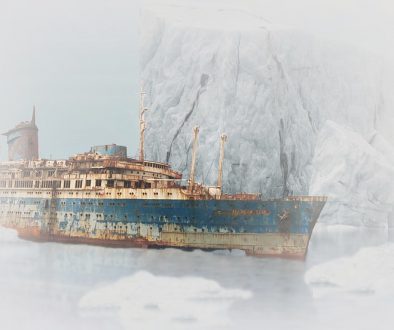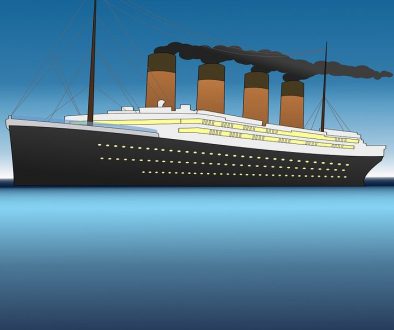The Titanic is Slowly but Surely Disappearing
Since the Titanic sank, things just keep on getting worse and worse for the Titanic and it has been revealed that the iconic shipwreck is in an extremely sorry state. More than 1500 people died when the Titanic sank on 15th April 1912 after hitting an iceberg in the Atlantic Ocean. There were only 705 survivors because the vast ocean liner set sail with too few lifeboats to hold everyone on board.
In 1912, the Titanic sank to a depth of more than 12,000 feet. Since then, dozens of manned and unmanned submersibles have visited and photographed the Titanic’s disintegrating body on the seafloor. After 70 years of disaster, the wreck of Titanic was discovered in 1985 during a US military mission. The Titanic was split in two and is gradually disintegrating at a depth of 12,415 feet.
Shocking Revelations by the Divers:
After being hit by an iceberg, the Titanic sank to the bottom of the ocean and now the saltwater in the ocean is finishing the job.
The metal-eating bacteria and saltwater is destroying the wreckage of the ship. The Titanic is being consumed by the ocean and is returning to its elemental form while providing refuge for a remarkably diverse number of animals.
In August, the divers visited the wreckage that lies at a depth of 3,800 meters in the North Atlantic. The pictures reveal that the ship has significantly deteriorated due to deep-sea currents and metal-eating bacteria. It is also reported that some features of the Titanic have completely decayed.
The ship’s bow is now covered in rustics and the bacteria are slowly consuming the metal. The divers said that wreck will continue to deteriorate over time.
The Titanic has been on the North Atlantic Ocean floor since 1912 after hitting an iceberg on its maiden voyage from Southampton to New York.
Intense pressure and the lack of light at a depth of nearly 4km make the Titanic’s environment unfriendly to most life.
How Microbes are eating the Wreckage:
The previous expeditions revealed that iron-eating microbes have colonized the ship and turned its 50,000 tonnes of iron into rustics’ that eventually dissolve into a fine powder and carried away on ocean currents. There would be nothing left of the Titanic by 2030, one expedition concluded.
It was assumed that the Titanic was sunk in one piece, but in 1985, the wreck was discovered revealing that the ship was broken up before reaching the ocean floor.
The latest expedition captured footage by using specially adapted cameras that allow computerized 3D models of the wreck to be constructed using virtual reality technology.
Entire Wreckage of the Ship Would Vanish by 2030:
The wreckage of the ship sat undisturbed for more than 70 years until the US Navy discovered it during what was later revealed to be a secret Cold War mission on September 1st, 1985.
The scientists think that the entire wreck of the Titanic will vanish by 2030 due to bacteria that are eating away at the metal.
Like all other things, the Titanic will disappear entirely as the decomposition of the wreck is a natural process. However, it will take a long time before the ship completely disappears.
The wreckage of the Titanic that lies more than 2 miles under the ocean surface is being destroyed by the deep-sea currents, salt corrosion, and metal-eating bacteria.
These things were revealed by an international team of deep-sea explorers that surveyed the sunken ship that is 3,800m down in the Atlantic Ocean.
This was done over the course of five submersible dives. Surprisingly, some parts of the ship are in good condition but other features had been lost to the sea.
Worst Decay:
The latest expedition found the worst decay on the starboard side of the officers’ quarters. Moreover, the sloping lounge roof of the bow section would probably be the next part to be lost.
Microbiologists & Scientists
Microbial biologist Lori Johnston told USA Today that much of the deterioration comes from a group of bacteria, named Halomonas titanic. These bacterias are working on ship and causing the rust of iron and the sulfur.
Henrietta Mann, the scientist who co-discovered Halomonas titanic bacteria in 2010, told Time that based on this new expedition footage and research, the Titanic has only 30 years left before it disappears.
‘The Titanic is Surely Returning to Nature’
The giant Titanic has been underwater for more than 100 years, lying about 600km off the coast of Newfoundland, Canada.
The expedition of the Titanic was carried out by the same team that recently made the deepest ever plunge to the bottom of the Mariana Trench.
Strong underwater currents and bad weather in the Atlantic Ocean made the dives difficult and getting entangled with the wreck was also a significant risk for the team.
Creatures Living on the Wreck:
While capturing footage, the scientists on the expedition have also seen the creatures living on the wreck. Life is thriving there despite the near-freezing conditions, pitch-black waters and immense pressure. There are microbes on the wreck of the ship.
These microbes are eating away the iron of the wreck itself and creating a much weaker form of the metal. The rust hanging off the wreck is so fragile it they can crumble into a cloud of dust if disturbed.
The wreck of the ship will continue to deteriorate over time. The reason that the deterioration process ends up being quite a bit faster, is a group of bacteria, working symbiotically to eat the iron and the sulfur. The higher ranges of the Titanic crumble and that is why the velocity of the Titanic’s deterioration will increase.



